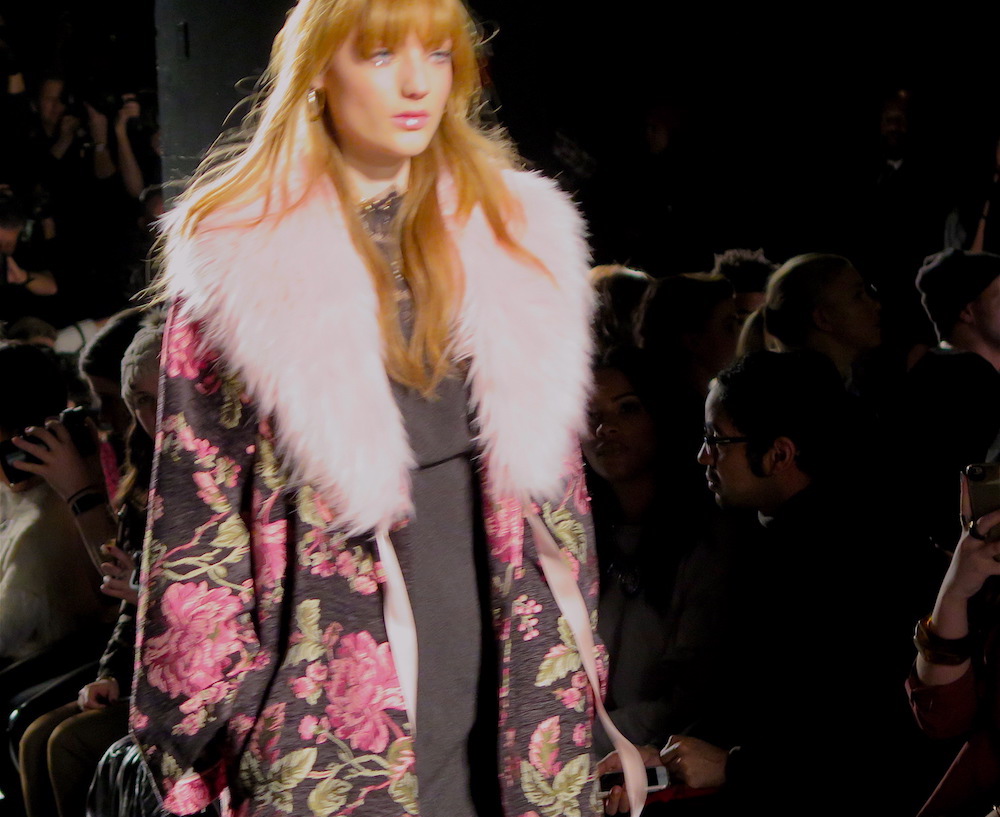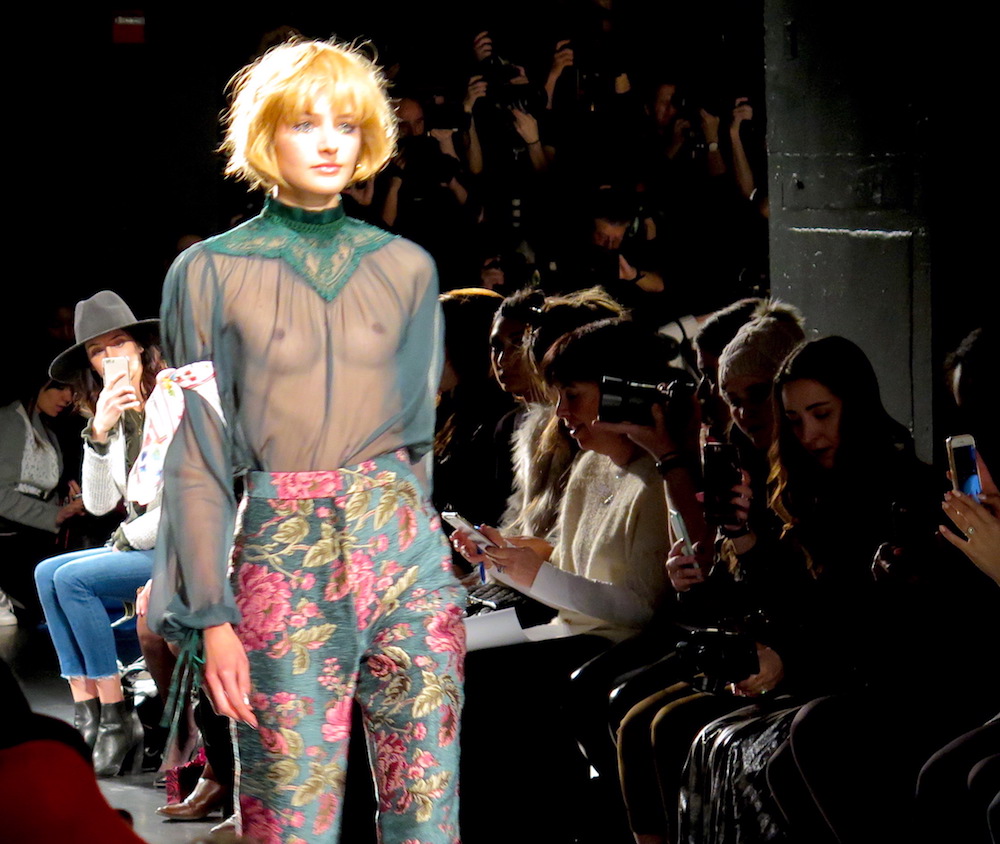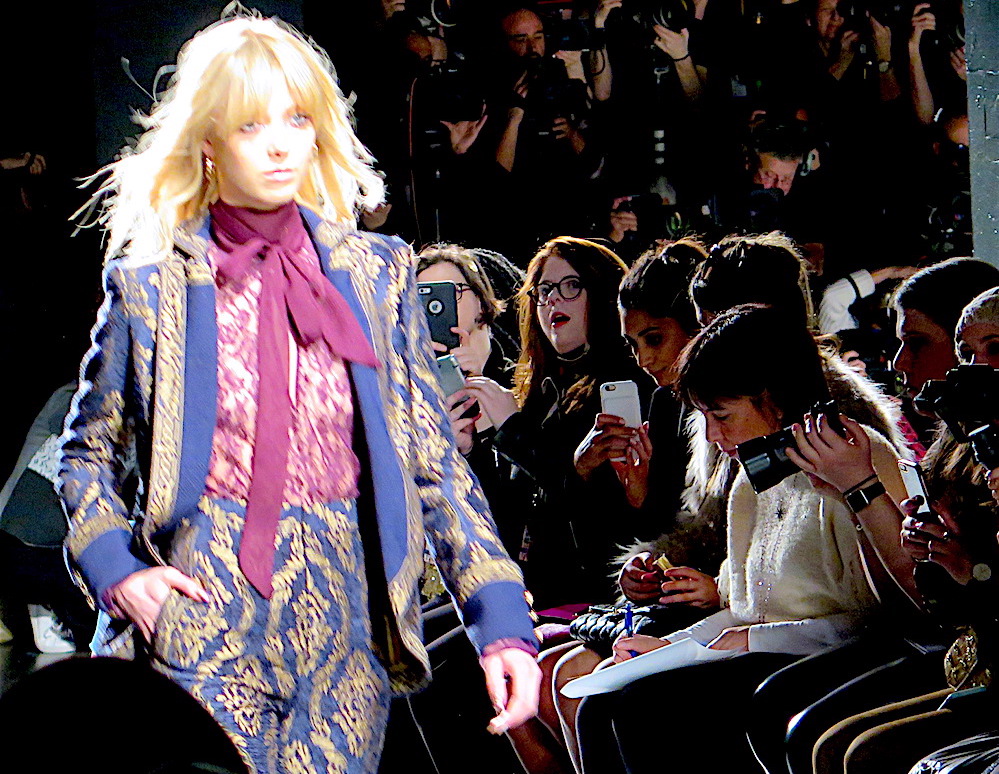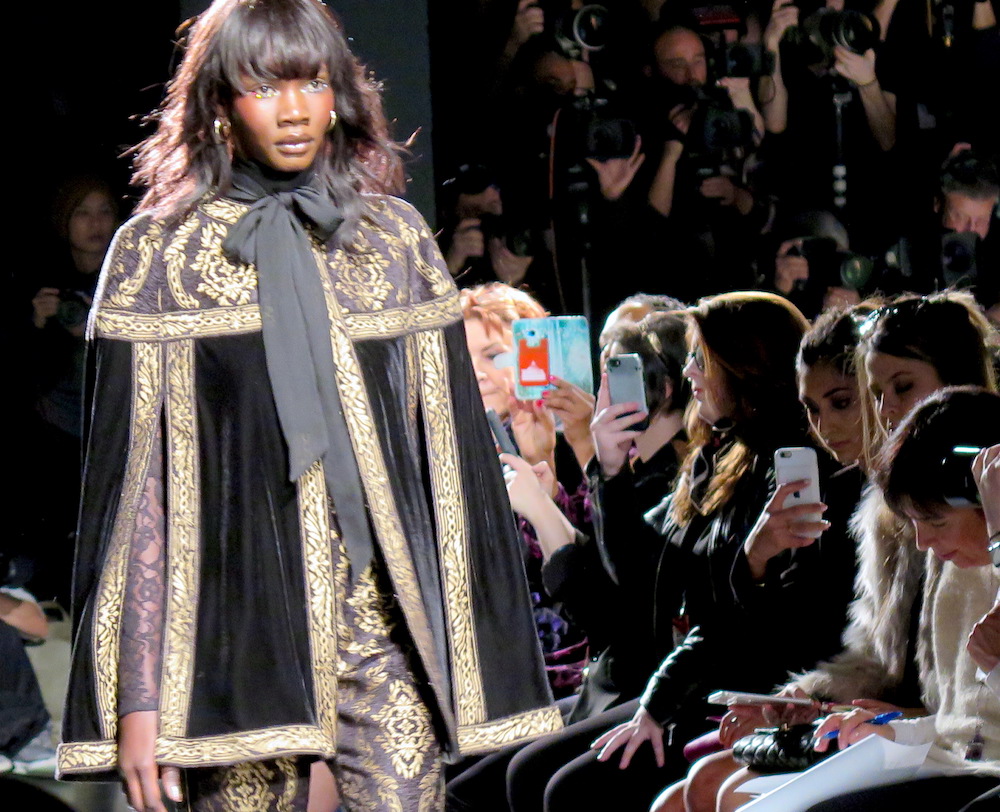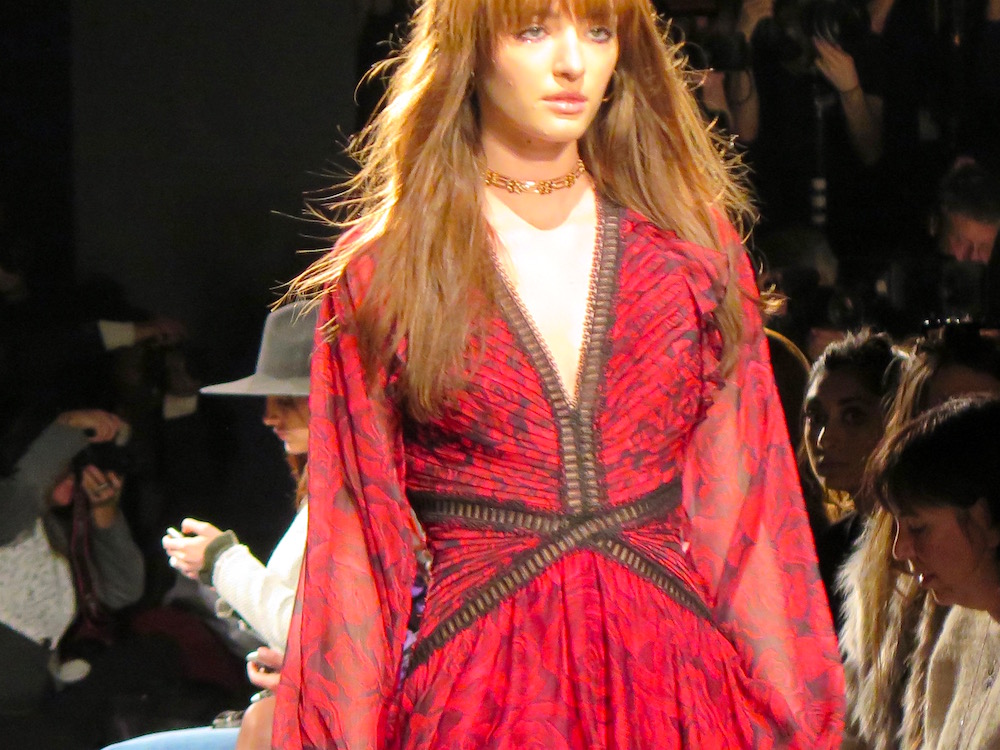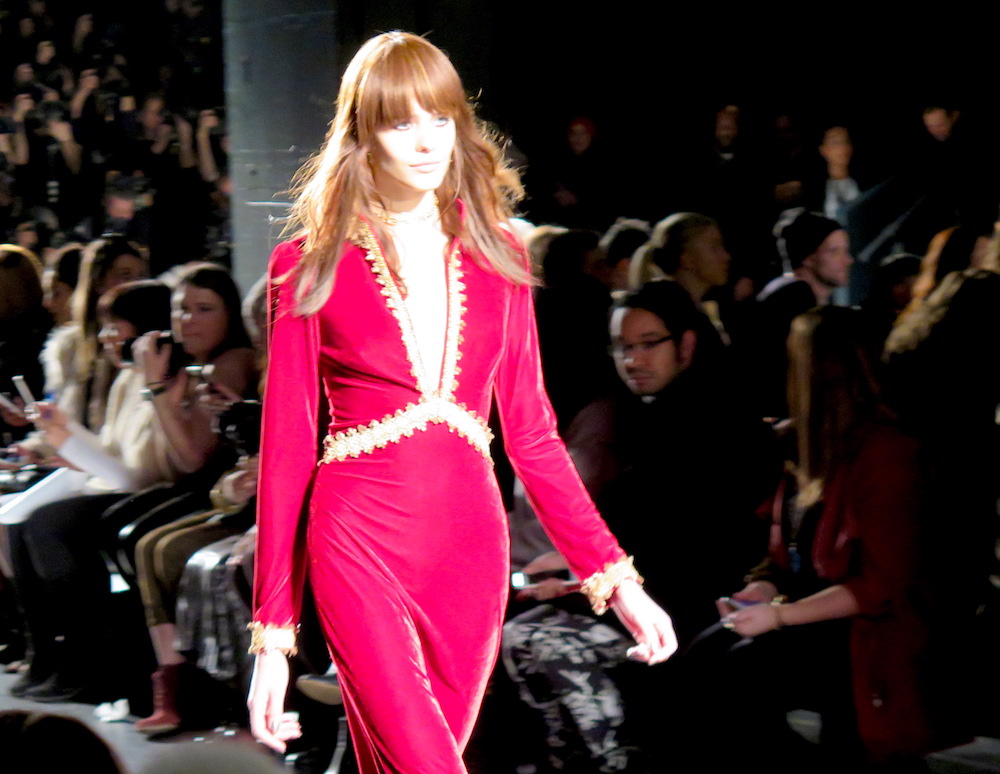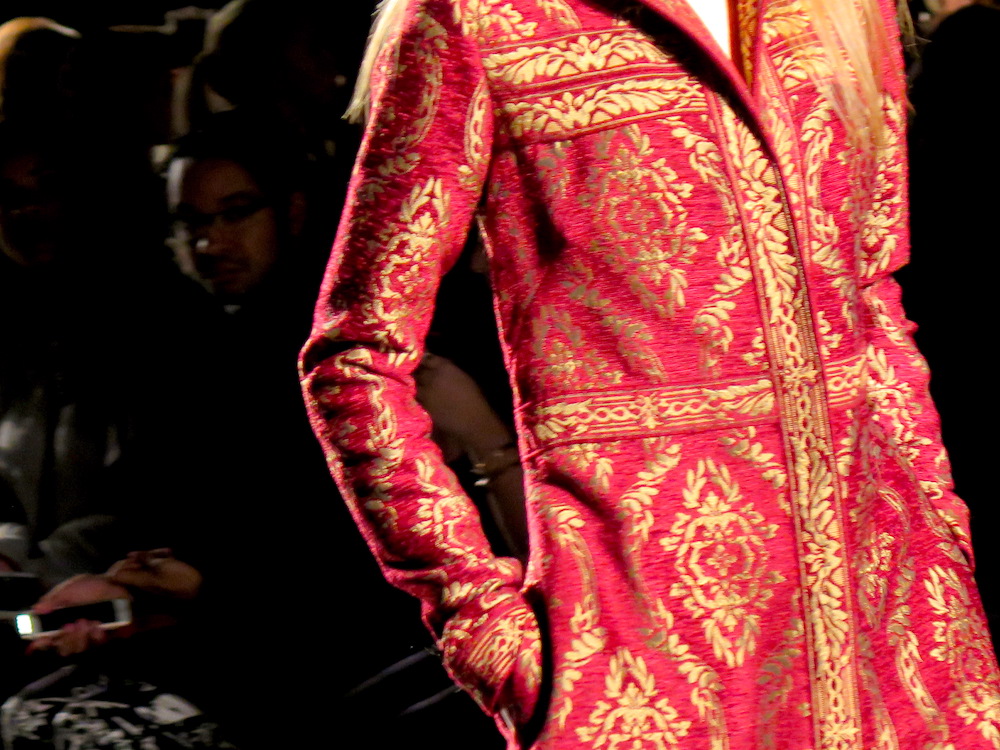For a time, anyone who was young and beautiful and wandering through Paris in a purple haze ended up at Le Palace, the premier discotheque of the late Seventies. An erstwhile music hall, Le Palace was the European equivalent of Studio 54 with a fabulously colorful clientele that reveled in excess, such as an opening night show with Grace Jones atop a pink Harley Davidson singing “La Vie en Rose.”
“Meet at Le Palace and fall into the decadence,” read the notes for Tadashi Shoji’s Fall/Winter 2017 show at Skylight Clarkson Square for New York Fashion Week. “The time to express your true self is now.” I remember exiting that Parisian club, drenched with sweat and somewhat shocked by daylight, shambling through the streets of Paris on a blissful high.
Meanwhile in Manhattan 2017, a floral brocade backdrop flickered across the crowd who wandered in from the snowfall that was transforming the city into a winter meringue. With a soundtrack that included the lyrics “lately things don’t seem the same / actin’ funny but I don’t know why / ‘scuse me while I kiss the sky” from Jimi Hendrix’s “Purple Haze” as well as tracks from David Bowie and Mick Jagger, Shoji’s F/W 2017 collection was a rose revolution that brilliantly captured the zeitgeist.
Suffused with vibrant velvets of royal blue and forest green, cardinal red and Persian rose, Shoji sent out a series of silhouettes that recalled the sinuous, slinking denizens of after-hours clubs and rock-and-roll music festivals.
As the models strode down the runway, your mind went racing through a memory Rolodex of images from Woodstock and Seventies films when muses like Marisa Berenson, Charlotte Rampling, and Michelle Phillips brought sexy to the revolutions.
Patti Hansen, wife of Keith Richards, came to mind with Shoji’s “Hendrix suit,” a stunning navy and gold floral brocade pantsuit paired with a wine lace top with Bordeaux bow collar — but then so did Marianne Faithfull, Mick Jagger’s erstwhile girlfriend who would’ve worn this ensemble while crooning “As Tears Go By” and “Broken English.”
“A wave of change is taking over the world,” wrote Shoji about his current collection, “This unrest will set you in motion.” Motion was a motif with Shoji’s fluid, metallic gowns that rippled like liquid silver and gold. A sheer forest green chiffon top with blouson sleeves paired with floral jacquard trousers evoked the kind of show-stopping entrances made by Bianca Jagger at Studio 54. A tea-length v-neck gown was accented with an Elizabethan collar and braid trim detail.
As has been the custom in recent years, Shoji showed on the opening day of New York Fashion Week. The American-based designer was trained as an artist in Sendai, Japan, which is evinced in his clear sense of line and color confidence. Celebrated for his gowns, which are worn by accomplished and confident women such as Former First Lady Michelle Obama and singers Katy Perry and Janelle Monae, Shoji has proved equally adept at creating mid-length dresses and trouser suits that convey sensual elegance.
A recent Times article addressed the dearth of celebrities at recent fashion events — but Shoji’s Fall / Winter 2017 show proved that the clothes on the runway are more potent in summoning sartorial muses. There they all were: Bianca, Marianne, Grace, Diana Ross, Jane Birkin, Stevie Nicks — their collective revolutionary spirit imbedded in the clothes.
And in the spirit of resistance, all of Shoji’s models wore white bandanas on their wrists, a sign of solidarity, unity, and inclusiveness organized by Business of Fashion (BoF) founder Imran Amed.
This season’s message about fashion’s role in revolution serves as a reminder that when you take to the streets, you’re making history — and where history is happening, photographers linger. To the barricades, then, with style.

